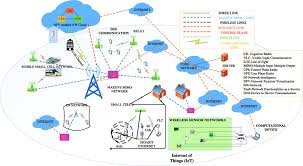vNIC (Virtualized NIC): How It Works and Why It Matters in Networking
telcomatraining.com – A Virtualized Network Interface Card (vNIC) is a virtual version of a Network Interface Card (NIC) used in virtualization environments to connect virtual machines (VMs) to a network. With vNIC, VMs can communicate with external networks or other VMs without requiring additional physical network cards.
vNIC technology plays a crucial role in cloud computing and server virtualization, where network infrastructure needs to be more flexible, efficient, and scalable.
How Does a Virtualized NIC Work?
A virtualized NIC works by mimicking the functions of a physical NIC in a virtual environment. Here are the basic steps of how vNIC functions:
- vNIC Creation – When a VM is created, the hypervisor (such as VMware vSphere, Microsoft Hyper-V, or KVM) automatically generates one or more vNICs for that VM.
- Connection to a Virtual Switch – The vNIC connects to a virtual switch (vSwitch) managed by the hypervisor. The virtual switch acts as an intermediary between the vNIC and the physical network.
- Network Communication – Data sent and received by the vNIC is routed through the vSwitch, which forwards packets to the appropriate destination, whether another VM or a physical network.
- Management and Security – Administrators can implement network policies such as VLAN tagging, traffic shaping, and virtual firewalls to control the traffic passing through the vNIC.
With vNIC, a VM can have multiple network interfaces for different purposes, such as separating public and private traffic.
Why is vNIC Important in Networking?
Virtualized NICs are a key component in modern networking for several reasons:
1. Efficiency and Scalability
vNICs allow cloud service providers and enterprises to easily scale network capacity without requiring additional hardware. With vNICs, networks can be dynamically reconfigured as needed.
2. Support for Virtualization and Cloud Computing
In cloud environments, every VM requires fast and reliable network access. vNICs enable cloud providers to offer low-latency and high-throughput connectivity without reliance on specific physical devices.
3. Enhanced Security
Hypervisors can enforce stricter security policies with vNICs, such as VM isolation, traffic monitoring, and data encryption. This helps reduce the risk of cyberattacks in multi-tenant environments.
4. Flexible Management
Network administrators can easily configure vNICs through software-defined networking (SDN). Features like bandwidth control, load balancing, and automatic failover make networks easier to manage and optimize.
5. Support for NFV (Network Functions Virtualization)
In modern networks, many network functions such as firewalls, load balancers, and IDS/IPS are implemented virtually. vNICs enable seamless communication between these services within an NFV-based infrastructure.
Implementation and Challenges of Using vNICs
While vNICs offer numerous benefits, some challenges must be considered:
- Performance Overhead – If not properly configured, vNICs can introduce additional latency compared to physical NICs.
- Security Risks – Without proper policies, vNICs can become targets for attacks like sniffing or spoofing.
- Compatibility Issues – Some legacy applications may not be fully compatible with virtual environments using vNICs.
Conclusion
Virtualized NICs (vNICs) are a crucial component of modern networking, especially in virtualization and cloud computing. By improving efficiency, flexibility, and security, vNICs help organizations manage network infrastructure that is more scalable and responsive to business needs. However, performance and security challenges must be carefully addressed to ensure optimal vNIC implementation.
If you manage a virtual or cloud environment, understanding and optimizing vNIC usage can provide significant benefits in network efficiency and management. Make sure to implement the right configurations to maximize vNIC performance.







